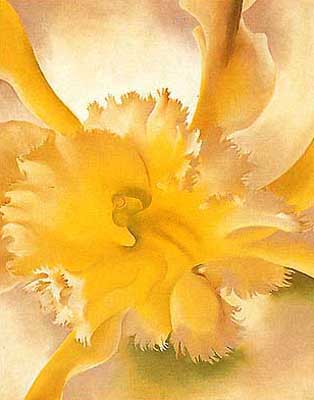Shapes varie in style, size and kind. They can be used as elements in a composition, a pattern or a texture. They can be parts of a whole or the whole in it self. Here are examples of the various kinds of shapes artists may use:
 Diego Rivera, The Flower Carrier Figurative Shapes  Wassily Kandinsky, Yellow, Red and Blue Non figurative shapes |
 Pablo Picasso, Still Life with Mandolin and Guitar, 1924 Geometric and organic shapes Interchanging lines, colors, patterns and textures, that switch from geometric to freehand, dark to light, positive to negative and plain to patterned, advance and recede in rhythms across the picture plain. Pablo Picasso and Georges Braque conceived and developed Cubism, the first abstract art form, but other artists also adopted the style.
 Georgia O’Keeffe
Organic Shapes |